Quiet as it’s kept, Atlanta is experiencing a cultural moment in the art world. A slew of recent events—including Atlanta Art Week, the first iteration of which took place last October—point to a major transformation underway in the southern metropolis. The initiative, which will host its second year of programming from October 2-8 later this year, invited over 20 of the city’s premiere museums, galleries, institutions, artist-led projects, and cultural partners to participate in talks, exhibition walkthroughs, and both private and public events that engaged audiences with Atlanta’s bustling art community.
Historically known as the cradle of the Civil Rights Movement, Atlanta has been a haven for Black southerners seeking opportunity and upward mobility since as far back as the Reconstruction era. As of late, “The A,” as some still call it, has seen the rise of longstanding museums and a rejuvenation of its Historically Black Colleges and Universities (HBCUs), both of which have been a force behind some of the most culturally relevant exhibitions across the country in recent years (these include the High Museum’s exhibition of Dawoud Bey’s “An American Project” and Spelman College’s “Black American Portraits.”) Meanwhile, the city’s art institutions have been busy acquiring work by Black artists who have shaped the last half century, from Benny Andrews and Carrie Mae Weems to Amy Sherald and Rashid Johnson. And the High specifically gives out its annual $50,000 Driskell Prize, which celebrates the life of the famed scholar and advocate David C. Driskell, while reflecting the museum’s commitment to the advancement of African American artists and educators. (In April, Ebony G. Patterson will take the 2023 award.)
This is a city that birthed Dr. Martin Luther King Jr. and Outkast; that is home to one of the largest film production studios in the country, Tyler Perry Studios; and that serves as the backdrop for the just-ended, critically acclaimed TV show, Atlanta. Recently, I sat down with some of the city’s diverse collectors and visited key institutions putting Atlanta on the map as a destination. My goal was to discover its best-in-class contemporary art, but also to get a sense of how all these diverse currents of energy seem to be adding up to something bigger and more critical.
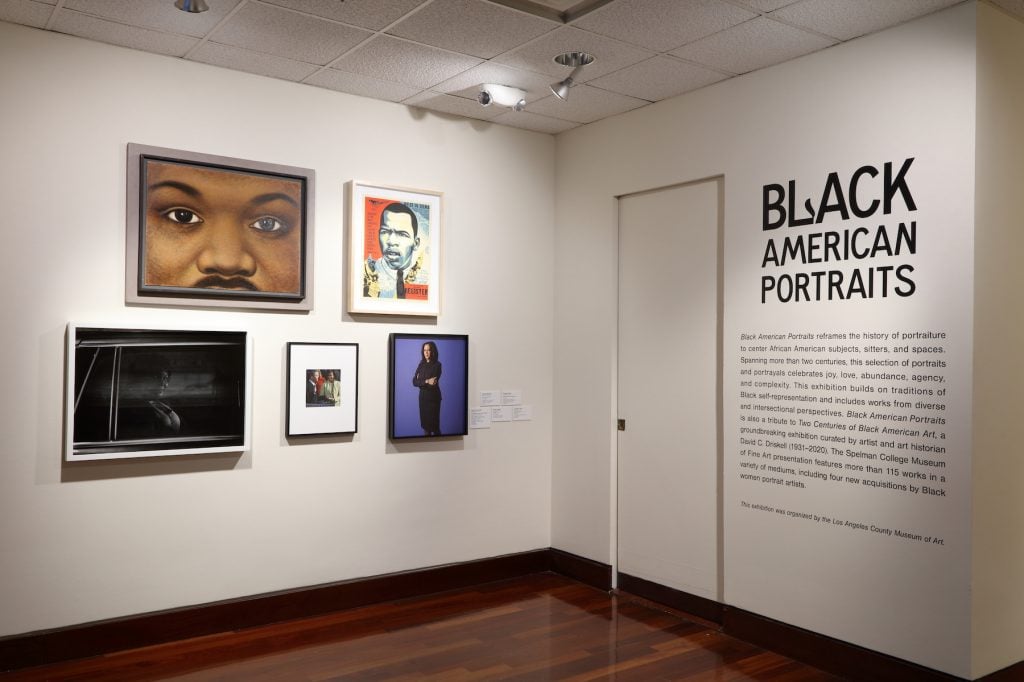
Installation view of “Black American Portraits” at Spelman College Museum of Fine Art. Photo by Michael Jensen.
Here & Now
“Atlanta is and has been a community for artists like Amy Sherald, Jordan Casteel, Radcliffe Bailey, Tyler Mitchell, Derrick Fordjour, and more,” Alex Davis Delotch, head of marketing at the High Museum of Art, pointed out.
As a marketer, Delotch’s interest is in “attracting attention and investment into the Atlanta arts ecosystem.” Among the signs that investment is snowballing, she can point to the launch, in August of last year, of UTA Artist Space. The art-focused Atlanta pop-up will culminate with a permanent space later this year—marking another critical moment in Atlanta’s growth as an arts destination. (The famed talent agency behind the space is one of the largest in Hollywood, representing some of the biggest stars across the globe including Tiffany Haddish, Kevin Hart, Issa Rae, and the incomparable Beyoncé.)
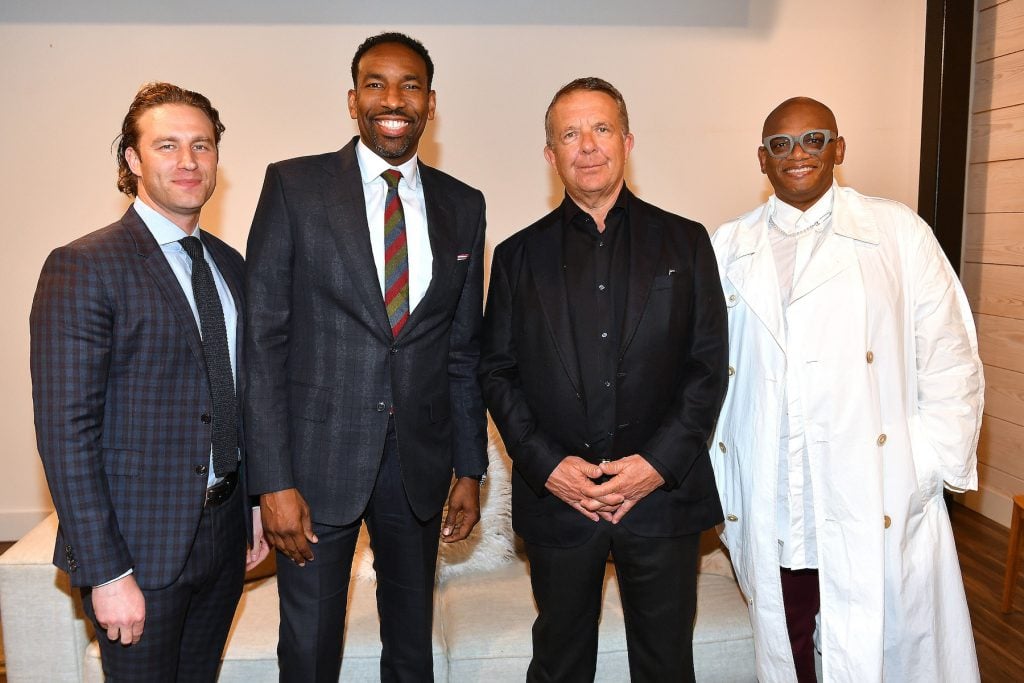
The cocktail reception to celebrate UTA Artist Space’s expansion to Atlanta on March 1, 2022. Left to right: UTA Partner & Talent Agent Steve Cohen; Mayor of Atlanta Andre Dickens; UTA CEO Jeremy Zimmer; and UTA Partner & Creative Director of UTA Fine Arts and UTA Artist Space Arthur Lewis. (Photo by Paras Griffin/Getty Images for UTA)
Atlanta’s UTA gallery space is run by former basketball player Virgil “Tony” Parker and Bridgette Baldo, longtime executive for UTA Fine Arts. Heading up UTA’s talent office are Steve Cohen, partner and agent of motion picture talent, and Arthur Lewis, partner and creative director of UTA Fine Arts and UTA Artist Space.
For both Cohen and Lewis, the expansion into Atlanta is something of a homecoming. Cohen graduated from Emory University in 2004 and Lewis attended Morehouse. “Atlanta has so much to offer,” Lewis declared in a press release for the space when it opened. “I have seen this city’s culture change drastically over three decades and from the incline I have seen I know there is no time like the present to invest in Atlanta’s art community.”
Newcomers & Old Timers
The lifeblood of any city is the people who inhabit its spaces, create its stories, and help us to better understand its culture. While in Atlanta, I stopped by Spelman college to see Liz Andrews, formerly at LACMA and now executive director at the Spelman Museum of Fine Art. She, in turn, connected me with a network of other trailblazers who are putting ATL on the map in a major way.
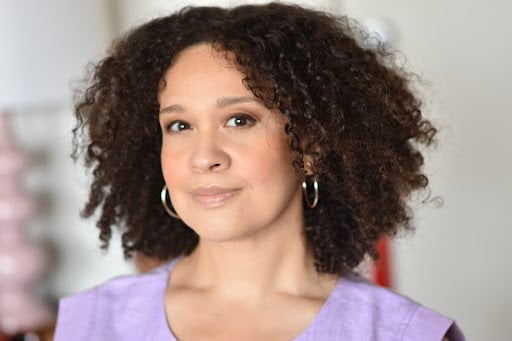
Liz Andrews. Photo by Lynn Andrews, 2021.
“We have been impressed with the local arts scene in Atlanta because so many gifted artists reside here,” Dr. Ray and Lucy Allen told me in an email after we visited. The couple have been collecting for over 30 years. They namechecked Radcliff Bailey, Kevin Cole, Michi Meko, Alfred Conteh, and Larry Walker as art figures who define Atlanta for them.
A general excitement with the forward momentum of Atlanta was also evidenced by Kent Kelley, an avid collector of art from Africa and the African diaspora. A transplant to Atlanta, he recently joined the High Museum’s acquisition committee and has aspirations of making the David Driskell Gala the South’s version of the Met Gala.
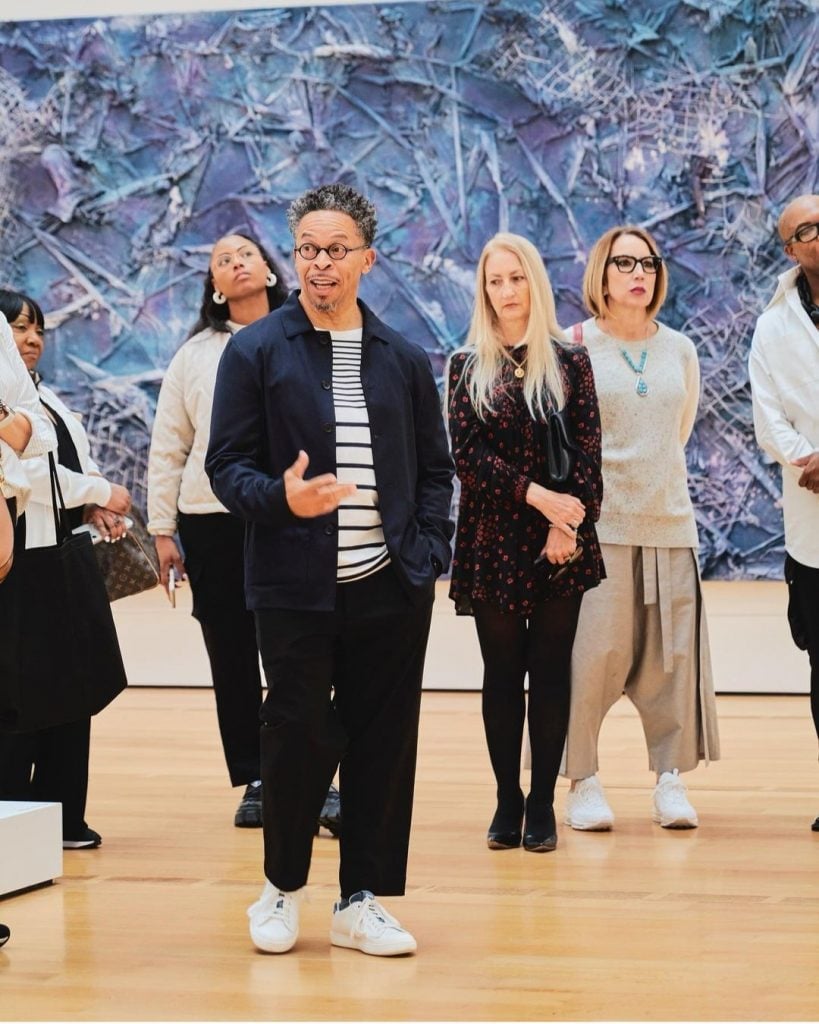
Kent Kelley, High Museum Trustee gives a guided tour of the contemporary wing during Atlanta Art Week. Photo by Raphael Miller.
Another power couple is Dr. William and India Epps, who have been collecting since 2006. “One of the things we’ve really enjoyed seeing is how our art institutions in Atlanta are actively collecting and displaying important Black American and African artists,” they wrote to me, pointing to the High Museum’s acquisitions of works by figures including Amoako Boafo, Ludovic Nkoth, Chase Hall, Papay Solomon, and Otis Quaicoe.
Tim Schrager, who sits on the board of directors of the High Museum and is Chairman Emeritus of the Atlanta Contemporary Art Center, showed me the impressive headquarters of Perennial Properties, the company he founded whose 10,000-square-foot space serves to showcase his collection. “As a board member, my goals include promoting the institution and spreading awareness about the many benefits a museum provides to the community,” Schrager told me. “I believe that more people seeing the art will lead to more support. I participate with my time as much as my treasure. That’s really important.”
A Rising Generation
During my weekend in Atlanta, while attending the opening of Ryan Cosbert’s “The Past Is The Future And The Future Is Now” at the UTA pop-up space in the historic Pullman Yards and visiting the High Museum, I was immediately struck by the number of young people I saw. It appeared most were under 30.
“We see more young people producing art-focused events and even more attending galleries and museums,” Delotch shared, confirming my observation. “It’s a good sign.”
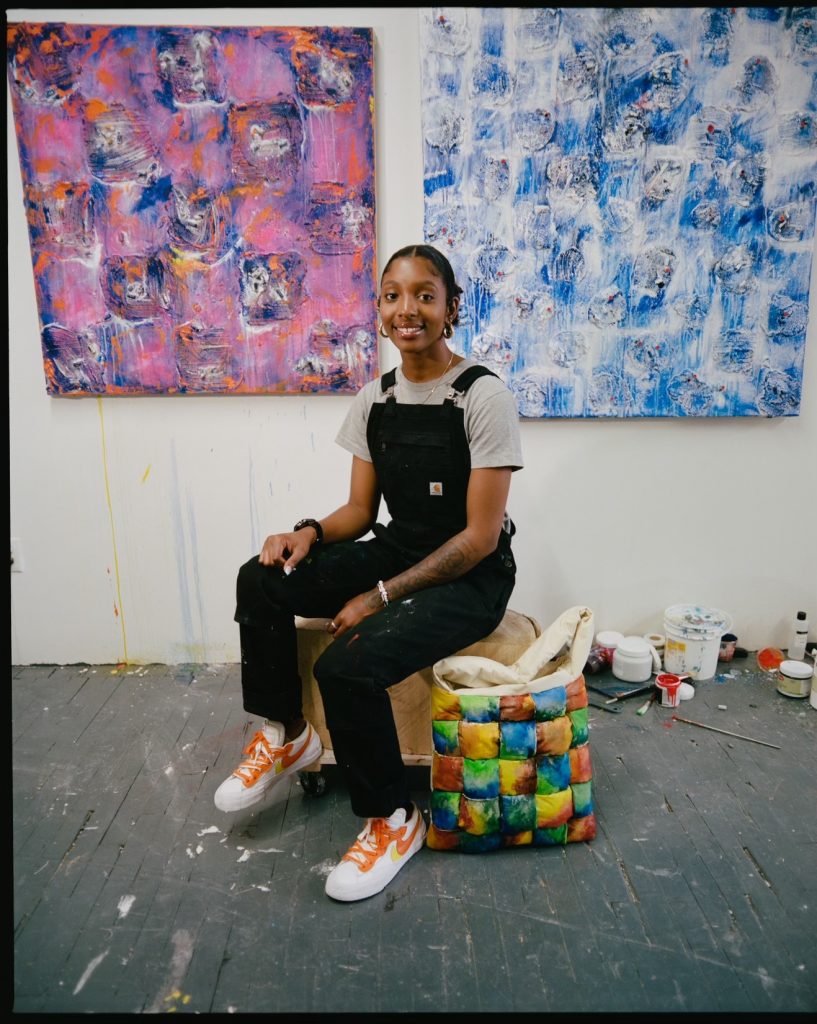
Ryan Cosbert. Courtesy of the Artist.
High Museum director Rand Suffolk also noted the younger ages of the museum’s participants that he’s seen since joining the institution in 2015. “In 2021, 73 percent of our visitors were under the age of 55 and 55 percent were under the age of 35,” he told me.
In addition, the High has experienced an incredible increase in the diversity of its audiences. From 2015 to 2020, it increased its BIPOC participation from 15 percent in 2015 to 51 percent in 2020—a 240 percent jump.
In my conversation with Schrager, he also pointed to this transformation in the audience as evidence of something new happening. “The High has made great strides toward appealing to a wider audience. Not only is attendance up, but the diversity of those attending has broadened in every category from age to gender to race. This doesn’t happen by accident. It’s 100 percent intentional and the museum leadership continues to make this a major focus, which is why there’s a great success story being told here.”
As I walked through Cosbert’s show and the contemporary exhibitions at the High, I eavesdropped on young viewers asking engaging and critical questions about this artist’s vibrant abstractions, Deanna Lawson’s challenging photographs, and Tyler Mitchell’s stop-you-in-your-tracks photographs. I did my own informal poll, walking up to strangers and asking questions. “How old are you?” “What do you think of the show?”
Most young people I encountered were students, young professionals, nomadic entrepreneurs, and ATL natives who’d watched the city’s art scene blossom over the years.
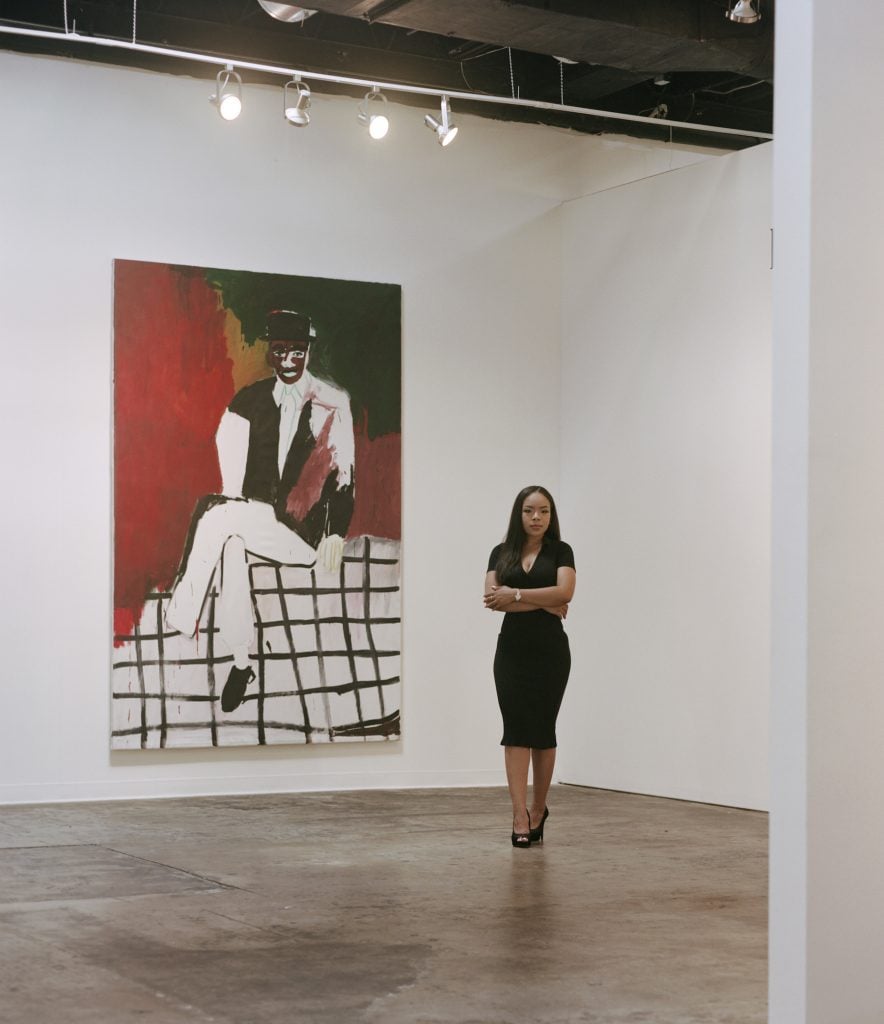
Kendra Walker in front of Still Untitled by Patrick Eugene. Photo by Piera Moore. Courtesy of Atlanta Art Week.
Kendra Walker, the founder of Atlanta Art Week, explained her motivations for starting the event to me. “I decided to launch Atlanta Art Week because I recognized a need and an opportunity to positively impact the community,” she told me. “Atlanta has a thriving and varied art community that merits recognition—on a national level.”
That recognition is coming. After a busy weekend in Atlanta I left feeling that a great change was taking place in this city I’d so often visited as a child. It was no longer simply a place defined by its past, by the Civil Rights movement, or by its music. Right before my eyes, Atlanta was reinventing itself as an art capital.
